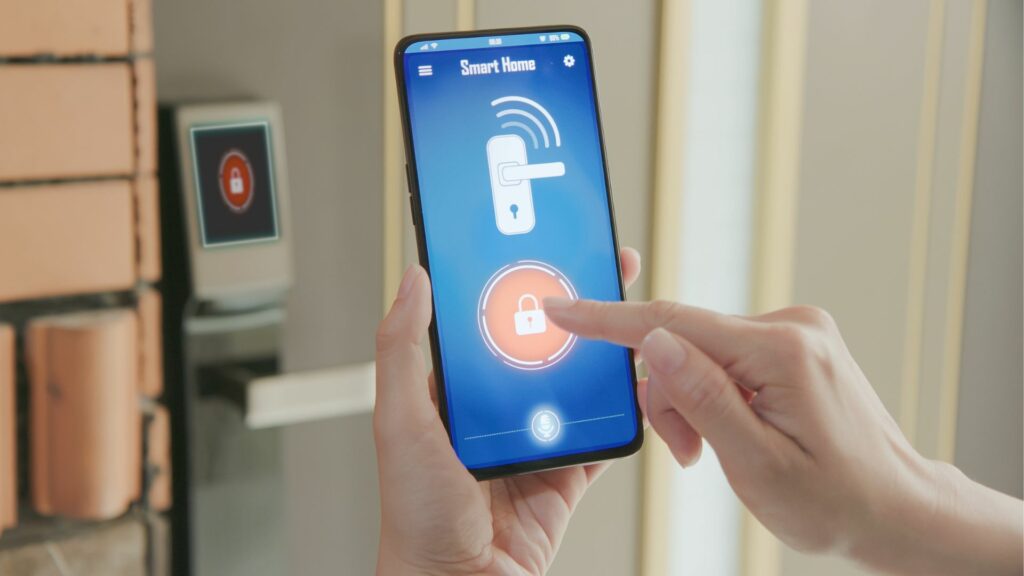Smart homes are becoming increasingly popular, and with good reason. They offer a variety of benefits, such as convenience, security, and energy savings. One of the most popular features of smart homes is the ability to control them with your fingerprint. This can be a much more convenient way to unlock your doors, control your lights, and adjust your thermostat than having to use a key, password, or PIN.
In this guide, we will show you how to unlock your smart home with fingerprint in 2023. We will cover everything from choosing the right fingerprint lock to adding your fingerprints and testing the lock.
Step 1: Choose a Fingerprint Lock
There are many different fingerprint locks on the market, so it is important to do your research and choose one that is right for your needs. Some factors to consider include:
- Security: How secure is the lock? Does it have a tamper-proof sensor? Is it compatible with your smart home system?
- Ease of use: How easy is the lock to install and use? Make sure that the fingerprint sensor is easy to access and that the lock is compatible with your existing hardware.
- Cost: Fingerprint locks range in price from around $50 to $200 or more. Consider your budget when choosing a lock.
Once you have considered these factors, you can start to narrow down your choices. Be sure to read reviews of different locks to get an idea of their performance.
Step 2: Install the Fingerprint Lock
Once you have chosen a fingerprint lock, you will need to install it. The installation process will vary depending on the type of lock you choose. Some locks are easy to install yourself, while others require professional installation.
If you are installing the lock yourself, be sure to follow the instructions that come with the lock carefully. If you are not comfortable installing the lock yourself, you can hire a professional to do it for you.
Step 3: Add Your Fingerprints
Once the lock is installed, you will need to add your fingerprints. The process for adding fingerprints will vary depending on the type of lock you choose. Some locks allow you to add multiple fingerprints, while others only allow you to add one fingerprint.
To add your fingerprints, you will need to place your finger on the fingerprint sensor. The sensor will scan your fingerprint and store it in the lock’s memory. You may need to repeat this process several times to ensure that your fingerprint is properly registered.
Step 4: Test the Fingerprint Lock
Once you have added your fingerprints, you should test the lock to make sure that it is working properly. Place your finger on the fingerprint sensor and see if the lock unlocks. If the lock does not unlock, you may need to re-register your fingerprint.
Step 5: Use Your Fingerprint to Unlock Your Smart Home Devices
Once the lock is working properly, you can start using your fingerprint to unlock your smart home devices. Simply place your finger on the fingerprint sensor and the device will unlock.
Additional Considerations
In addition to the steps mentioned above, there are a few other things to consider when using fingerprints to unlock your smart home devices:
- Fingerprint accuracy: Fingerprint sensors are not always 100% accurate. This means that there is a small chance that the lock will not recognize your fingerprint and you will be unable to unlock the device.
- Fingerprint wear and tear: Your fingerprints can change over time, due to factors such as age and wear and tear. This means that you may need to re-register your fingerprints periodically to ensure that the lock continues to recognize your fingerprint.
- Security of fingerprint data: Fingerprint data is sensitive information, so it is important to make sure that it is stored securely. Some fingerprint locks store fingerprint data locally on the device, while others store it in the cloud. If you are concerned about the security of your fingerprint data, you should choose a lock that stores fingerprint data locally.
Conclusion
Using fingerprints to unlock your smart home devices is a convenient and secure way to control access to your devices. By following the steps in this guide, you can easily set up and use fingerprint locks to protect your smart home.
Frequently Asked Questions (FAQ)
Yes, any internet-connected devices have some vulnerability to hacking, though attacks are still rare. Maintain security updates and strong passwords.
Z-Wave uses encryption to make it more hack-resistant than WiFi smart devices. There are no known major unpatched exploits. But no system is perfectly secure.
Reset all account passwords, update devices, change WiFi password, remove unauthorized account links, run antivirus scans, enable two-factor authentication.
Most use encrypted connections that are very difficult to hack. But no connected device is perfectly secure. Smart safes are generally considered secure if kept updated.
Reasonably safe with proper precautions like password protections, security updates and disabling unused features/accounts. But risks exist, especially if not monitored.
You maintain ownership and primary control, though manufacturers can update devices/apps. Voice assistants access home when actively used but can be disabled otherwise.
Reputable brands use encryptions to prevent remote hacking but no method is completely immune. Lack of physical keys is a downside if compromised.
A smart lock using the Z-Wave protocol for local wireless communication. Z-Wave is considered very secure with encrypted signals.
No, Google Assistant requires a hub or bridge with Z-Wave support built in, like SmartThings, Hubitat or Home Assistant.

![How to Unlock Smart Home with Voice Commands [2024 Updated]](https://unlocktherapy.net/wp-content/uploads/2023/10/Smart-Home-With-Voice-1024x576.jpg)
